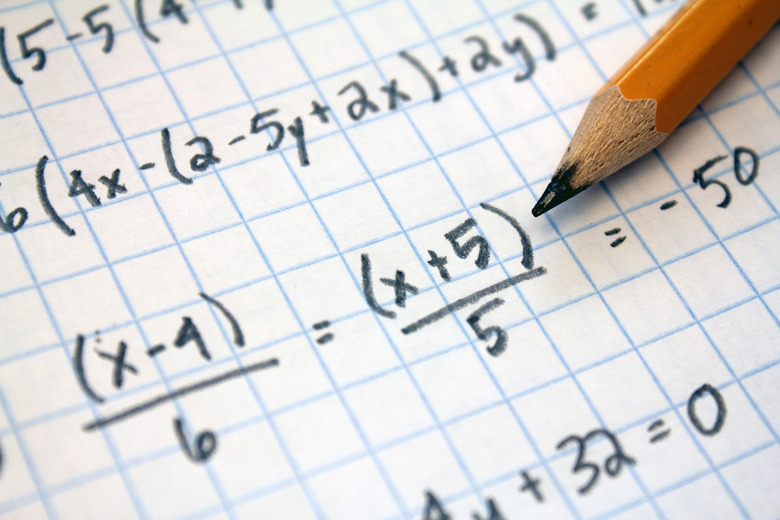How To Teach Missing Addends
Addition problems with missing addends are a bit more complicated than problems showing both numbers to combine. The skill is generally taught in first grade math, then problems get more and more difficult as pupils progress through the elementary years. Hopefully, by the time students reach middle and high school, it's a short and easy step from 3 + ___ = 5 to pre-algebraic equations such as 3 + n = 5.
Teaching Missing Addends With Counters
Step 1
Teach students to add in the usual fashion before introducing missing addend problems. It is vital that learners not only understand the concept of addition, but that they are fluent with the skill. They must be able to solve the regular version of the addition problem before attempting the missing addend version of the same problem.
Step 2
Write a missing addend math problem on the board. Lay out counters to match the known addend and the given sum.
Step 3
Match each counter from the known addend group to a counter in the sum group. The unmatched counters in the sum group equal the number needed for the missing addend.
Step 4
Show the connection between missing addend addition and the related subtraction problem. For the problem 8 + ___ = 15, use counters to demonstrate the problem 15 – 8 = 7 by grouping 15 counters, then removing 8 to leave 7. Use the counters to show that 7 more are needed to go with the 8 to make 15.
Step 5
Repeat the demonstration using various addition problems until the student can manipulate the counters independently to solve the problem. Be sure to incorporate the related subtraction fact for each trial.
Step 6
Eliminate the counters. Have the student solve missing addend problems by determining the related subtraction fact, then plugging the correct numbers into the original equation.
Step 7
Increase the magnitude of the numbers and the complexity of the problems as students mature until they can solve missing addend problems with numbers of any size.
Teaching Missing Addends with Triangle Flashcards
Step 1
Create or purchase triangle-shaped addition flashcards. These have addend numbers in two corners and the sum in the third corner.
Step 2
Practice regular addition facts with the students by covering the corner showing the sum with a finger. Students must combine the addends to solve the problem. Work at this level until students are proficient at the task.
Step 3
Cover one addend. Ask students to recall the missing number from the set. Remind them that they can use subtraction to solve the problem.
Things Needed
- Whiteboard
- Markers
- Eraser
- Practice worksheets
- Pencils
- Counters
- Triangle addition flashcards
References
- "Math Matters: Understanding the Math You Teach"; Suzanne Chapin and Art Johnson; 2006
- "Teaching Learners Who Struggle with Mathematics: Systematic Intervention and Remediation"; Helene J. Sherman, Lloyd I. Richardson, George J. Yard; 2009
Cite This Article
MLA
Fleming, Sandy. "How To Teach Missing Addends" sciencing.com, https://www.sciencing.com/teach-missing-addends-7645613/. 15 December 2010.
APA
Fleming, Sandy. (2010, December 15). How To Teach Missing Addends. sciencing.com. Retrieved from https://www.sciencing.com/teach-missing-addends-7645613/
Chicago
Fleming, Sandy. How To Teach Missing Addends last modified August 30, 2022. https://www.sciencing.com/teach-missing-addends-7645613/
